
 Space operations developer @ Southwest Research Institute
Space operations developer @ Southwest Research InstituteHi, I'm Caden! I develop software for space science and spacecraft operations. I work on a number of NASA science missions and have previously conducted research in high-energy astrophysics, using multiwavelength data from space and ground-based telescopes around the world. I am passionate about developing innovative software, technology, and instrumentation to enable scientific discoveries across a range of disciplines.
Warning
Problem: The current name of your GitHub Pages repository ("Solution: Please consider renaming the repository to "
http://".
However, if the current repository name is intended, you can ignore this message by removing "{% include widgets/debug_repo_name.html %}" in index.html.
Action required
Problem: The current root path of this site is "baseurl ("_config.yml.
Solution: Please set the
baseurl in _config.yml to "Education
-
 George Washington UniversityB.S., Astronomy & Astrophysics
George Washington UniversityB.S., Astronomy & Astrophysics
Minors in Mathematics and Mind/Brain Studies2018 - 2022 -
 Raisbeck Aviation High School2014 - 2018
Raisbeck Aviation High School2014 - 2018
Experience
-
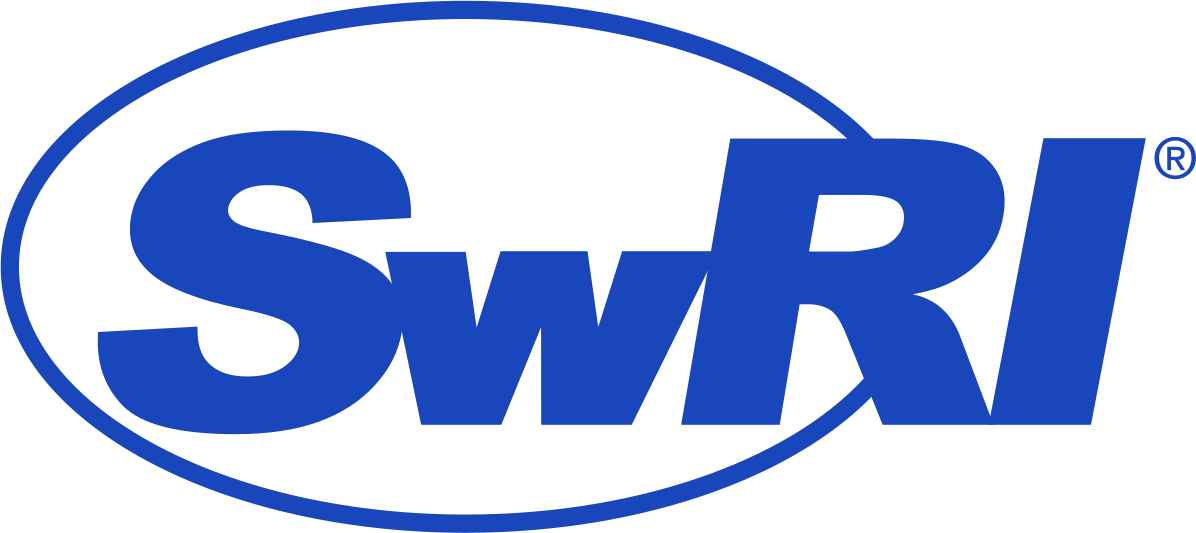 Southwest Research InstituteResearch AnalystJuly 2022 - present
Southwest Research InstituteResearch AnalystJuly 2022 - present -
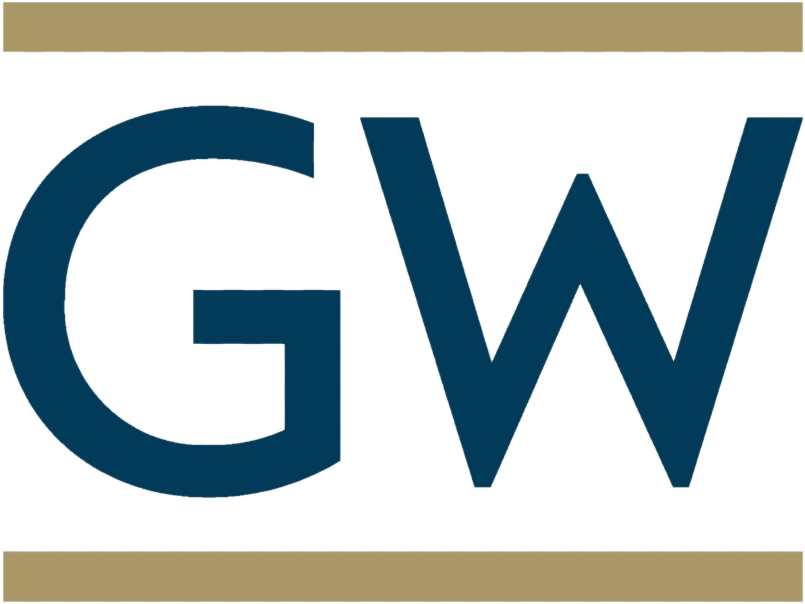 George Washington Univ. Dept. of PhysicsResearch FellowMay 2021 - May 2022
George Washington Univ. Dept. of PhysicsResearch FellowMay 2021 - May 2022
Selected Publications (view all )
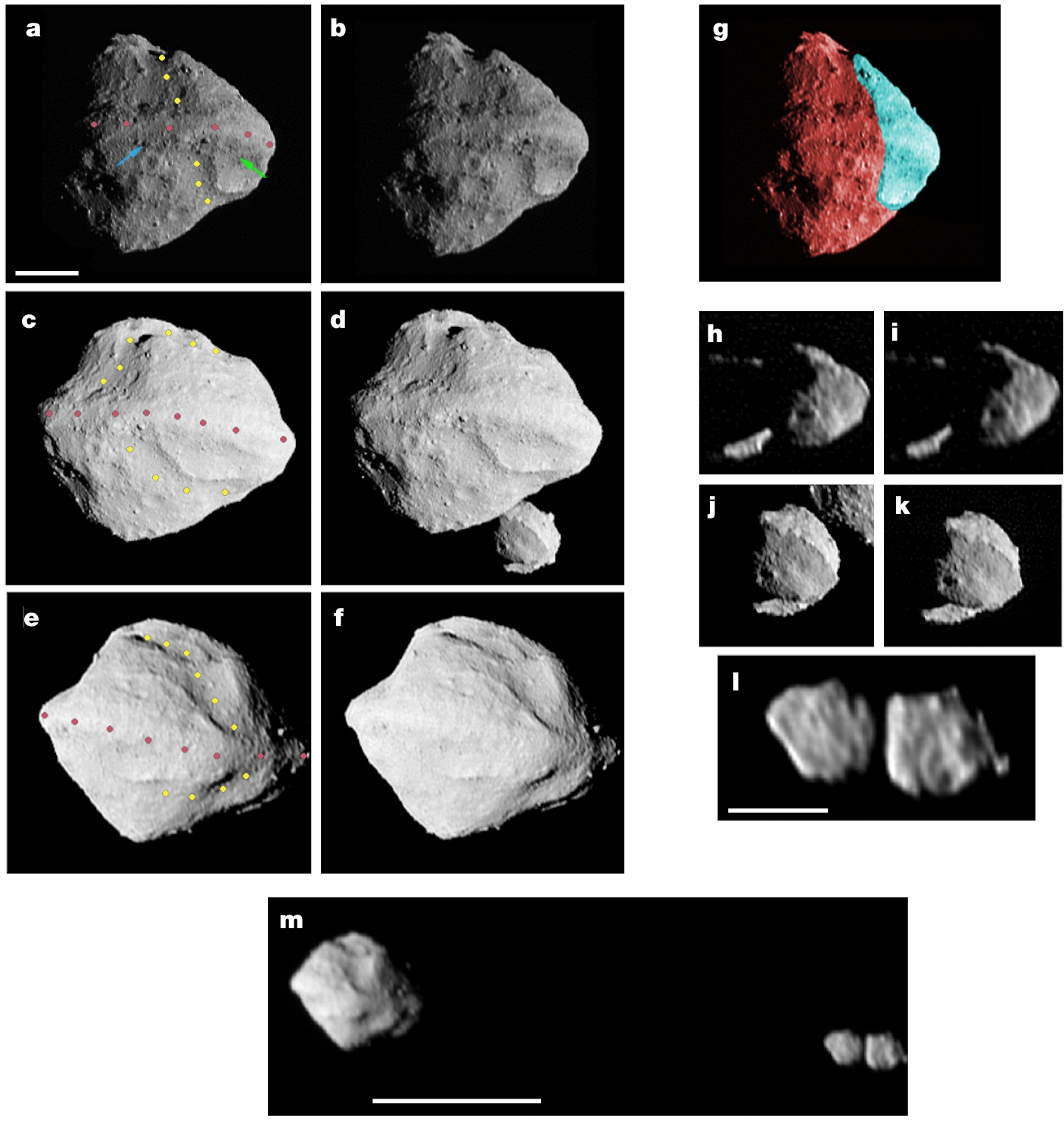
A contact binary satellite of the asteroid (152830) Dinkinesh
Harold F. Levison, et al., Caden Gobat
Nature 2024 Spotlight
Overview of the Lucy spacecraft's flyby of the asteroid (152830) Dinkinesh, and announcement of its discovery that Dinkinesh is a binary system in which the smaller body is itself a contact binary.
A contact binary satellite of the asteroid (152830) Dinkinesh
Harold F. Levison, et al., Caden Gobat
Nature 2024 Spotlight
Overview of the Lucy spacecraft's flyby of the asteroid (152830) Dinkinesh, and announcement of its discovery that Dinkinesh is a binary system in which the smaller body is itself a contact binary.
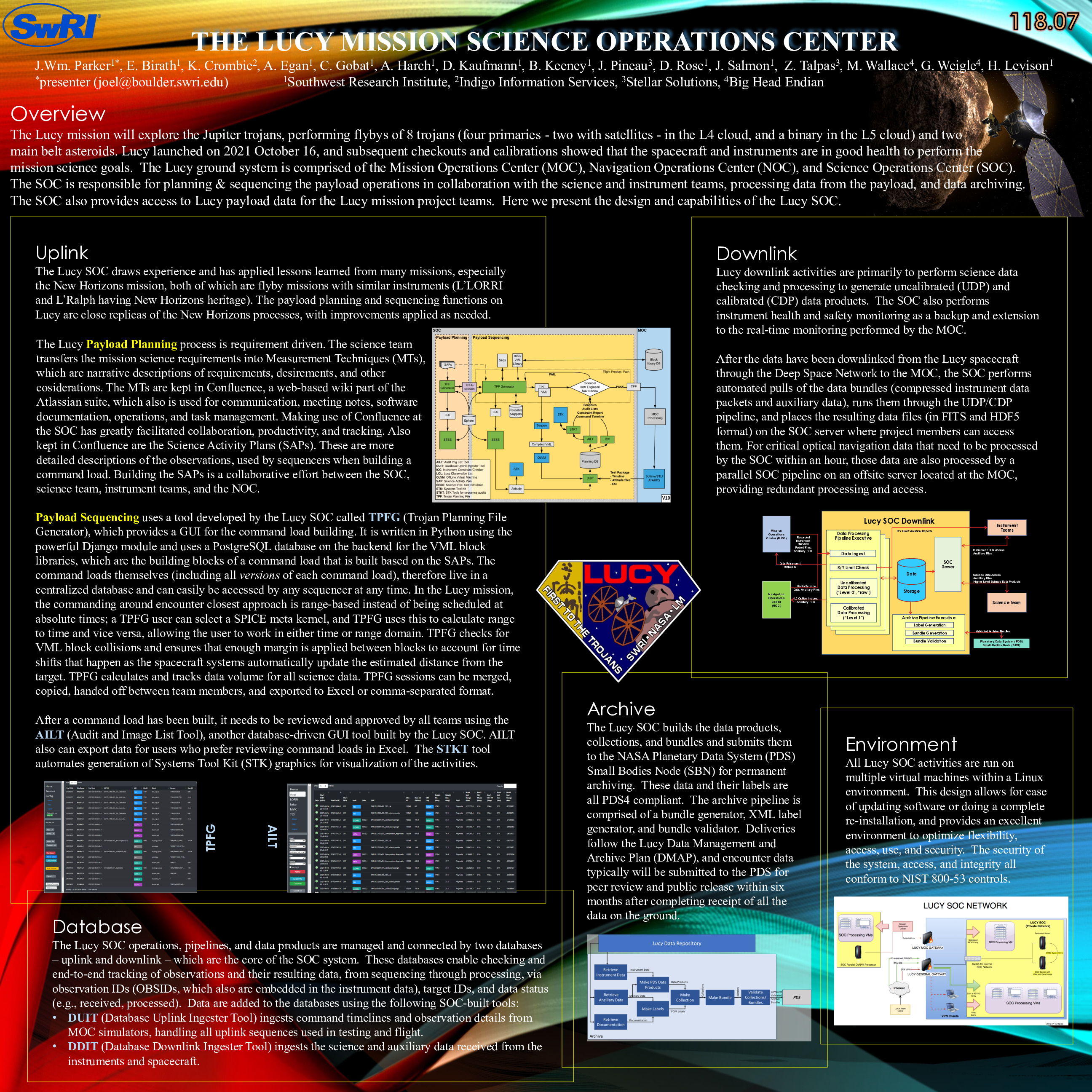
The Lucy Mission Science Operations Center
Joel Wm. Parker, Emma Birath, M. Katherine Crombie, Anthony Egan, Caden Gobat, Ann Harch, David Kaufmann, Brian Keeney, Jon Pineau, Debi Rose, Julien Salmon, Zach Talpas, Mike Wallace, Gerald E. Weigle, Zach Wiens, Harold F. Levison
55th Annual Meeting of the AAS Division for Planetary Sciences 2023
Description of the Lucy mission's Science Operations Center.
The Lucy Mission Science Operations Center
Joel Wm. Parker, Emma Birath, M. Katherine Crombie, Anthony Egan, Caden Gobat, Ann Harch, David Kaufmann, Brian Keeney, Jon Pineau, Debi Rose, Julien Salmon, Zach Talpas, Mike Wallace, Gerald E. Weigle, Zach Wiens, Harold F. Levison
55th Annual Meeting of the AAS Division for Planetary Sciences 2023
Description of the Lucy mission's Science Operations Center.
Design and Implementation of the Lucy Mission PDS4 Archive
Caden Gobat, M. Katherine Crombie, Joel Wm. Parker, David Kaufmann
6th Planetary Data Workshop 2023
Description of the Lucy mission's PDS4 archive design, delivery schedule, and software suite.
Design and Implementation of the Lucy Mission PDS4 Archive
Caden Gobat, M. Katherine Crombie, Joel Wm. Parker, David Kaufmann
6th Planetary Data Workshop 2023
Description of the Lucy mission's PDS4 archive design, delivery schedule, and software suite.
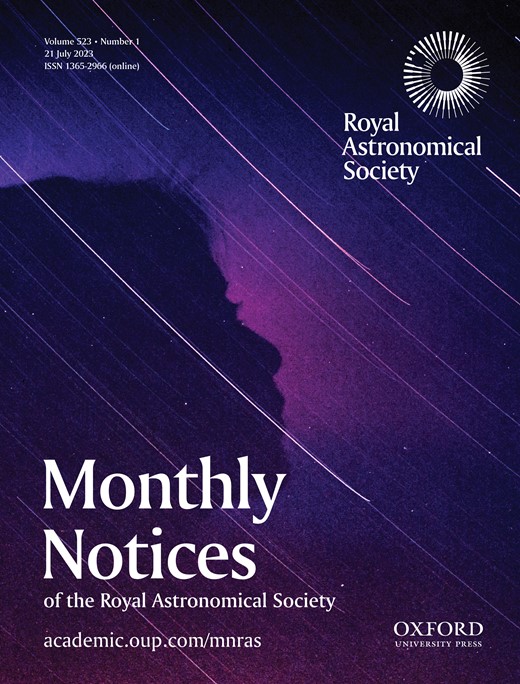
Optical darkness in short-duration γ-ray bursts
Caden Gobat, Alexander J. van der Horst, David Fitzpatrick
Monthly Notices of the Royal Astronomical Society 2023 Spotlight
Comprehensive investigation into optical darkness (dimmer-than-expected flux in the optical band) in short GRBs, which are associated with binary neutron star merger events.
Optical darkness in short-duration γ-ray bursts
Caden Gobat, Alexander J. van der Horst, David Fitzpatrick
Monthly Notices of the Royal Astronomical Society 2023 Spotlight
Comprehensive investigation into optical darkness (dimmer-than-expected flux in the optical band) in short GRBs, which are associated with binary neutron star merger events.
Asymmetric Uncertainty: Handling nonstandard numerical uncertainties
Astrophysics Source Code Library 2022
Asymmetric Uncertainty is a Python module that implements and provides an object class for dealing with uncertainties for physical quantities that are not symmetric.
Asymmetric Uncertainty: Handling nonstandard numerical uncertainties
Astrophysics Source Code Library 2022
Asymmetric Uncertainty is a Python module that implements and provides an object class for dealing with uncertainties for physical quantities that are not symmetric.
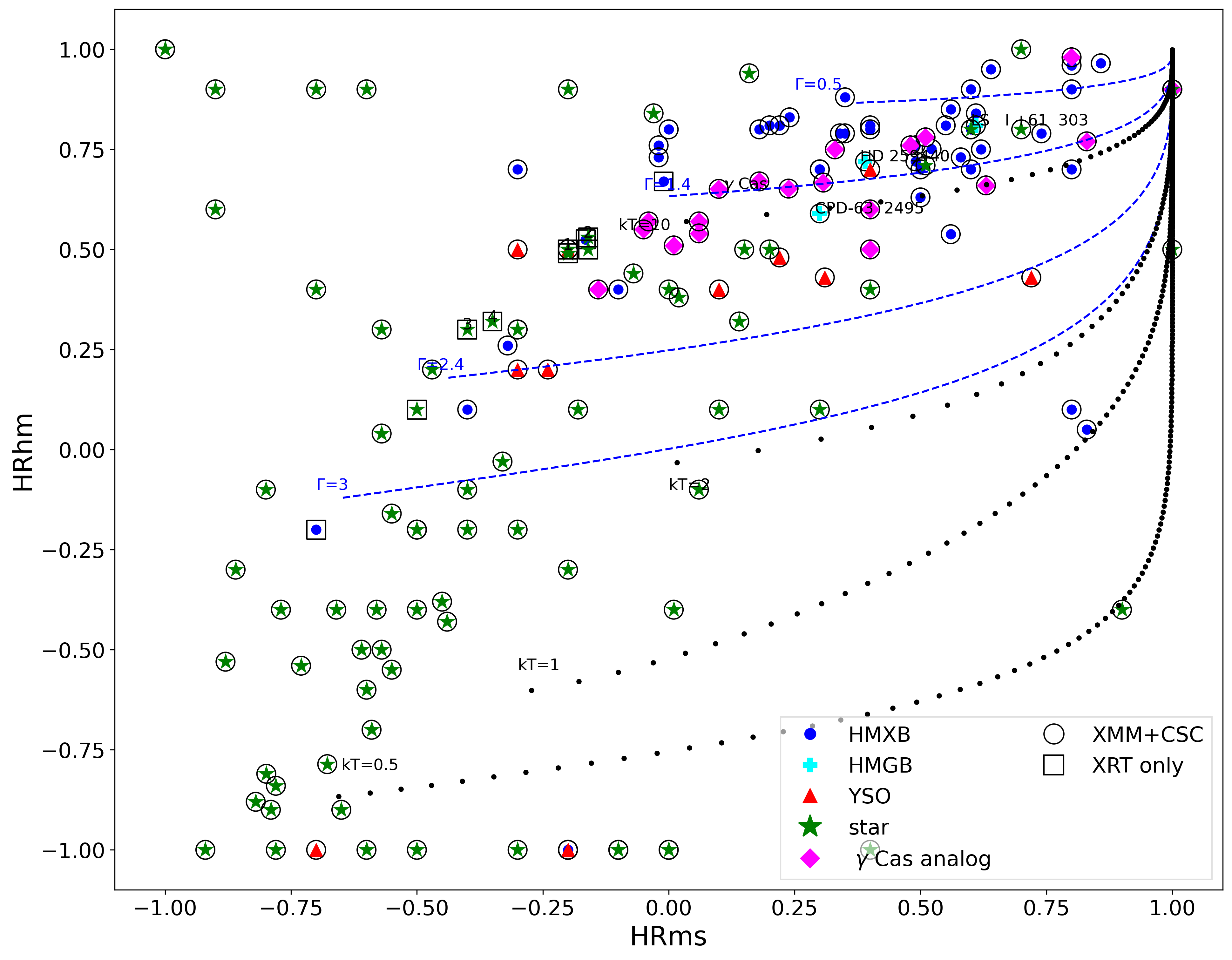
Catalog of X-ray Detected Be Stars (XDBS)
Caden Gobat, Hui Yang, Oleg Kargaltsev, Jeremy Hare, Igor Volkov
Research Notes of the American Astronomical Society 2022
We present a catalog of X-ray Detected Be Stars (XDBS) with 161 Be stars from the Be Star Spectra (BeSS) database having X-ray counterparts in the Chandra Source Catalog v2.0, XMM-Newton 4XMM-DR11 Catalog, or Swift 2SXPS Catalog.
Catalog of X-ray Detected Be Stars (XDBS)
Caden Gobat, Hui Yang, Oleg Kargaltsev, Jeremy Hare, Igor Volkov
Research Notes of the American Astronomical Society 2022
We present a catalog of X-ray Detected Be Stars (XDBS) with 161 Be stars from the Be Star Spectra (BeSS) database having X-ray counterparts in the Chandra Source Catalog v2.0, XMM-Newton 4XMM-DR11 Catalog, or Swift 2SXPS Catalog.
Optical darkness in short-duration gamma-ray bursts
Caden Gobat, Alexander J. van der Horst
19th Meeting of the AAS High Energy Astrophysics Division 2022
Poster presentation about work on optical darkness in short GRBs. See 2023 MNRAS paper for complete details.
Optical darkness in short-duration gamma-ray bursts
Caden Gobat, Alexander J. van der Horst
19th Meeting of the AAS High Energy Astrophysics Division 2022
Poster presentation about work on optical darkness in short GRBs. See 2023 MNRAS paper for complete details.